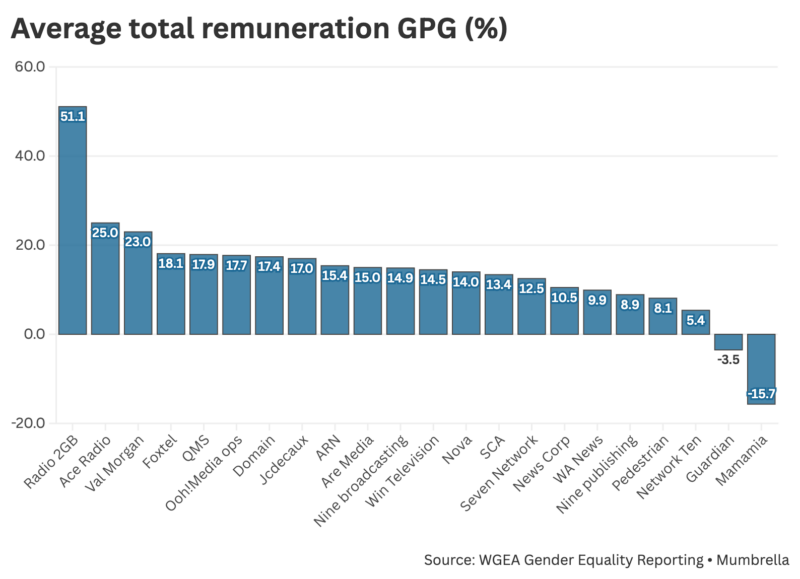From 2GB to Mamamia, the media pay gap laid bare
The latest pay gap data shows that media companies run from a massive 51% pay difference (at 2GB) to rare positive situations for women (Mamamia).
In Mumbrella’s graphic of the Workplace Gender Equality Agency (WGEA), it’s easy to see the best and worst performers. Also, for the first time this year, actual average salaries are available, allowing employees to compare their paypackets with others. (Click to enlarge the graphic below).



I do think on-air talent should be excluded from these as it skews things considerably. Very hard to compare across channels when OOH doesn’t have talent on the books.
It’s so much more than that. Maybe read a bit more about it
The gender ‘pay gap’ is the product of the different temperaments and choices men and women make. It is not because of any ‘sexism’. Can we please leave this false trope in the past?
I agree with others, these charts are absolutely meaningless without more detailed data.
The Gender pay gap should just be renamed the ‘skills pay gap’, in most cases. I don’t believe there are many companies, today, that pay women less than men – In the same roles.
My partner (female) is a registered nurse and she gets paid a hell of a lot more than I do. If I was working at the same workplace, as a janitor would I have the right to claim gender pay inequality?
This narrative is just silly and has been captured by the Union movement to try and get better pay in, largely, unskilled or low skilled roles.